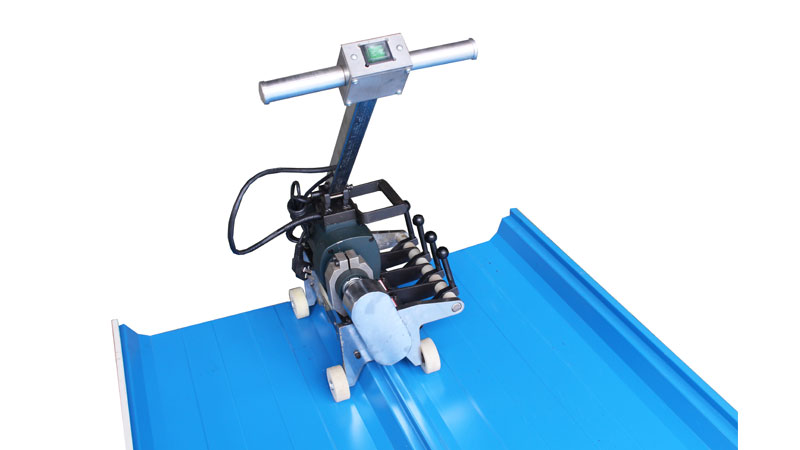
Electric seaming machines have revolutionized industries reliant on durable, secure seams, becoming a staple in sectors like metalworking, packaging, and textiles. These machines use electric motors to create precise seams that are faster, more efficient, and consistent than those made by traditional manual or mechanical methods. This technological leap has enabled businesses to improve productivity, reduce labor costs, and enhance product quality. By seamlessly joining electric seaming machine such as metal, plastic, and fabric, electric seaming machines have become vital tools in ensuring the durability and functionality of countless products worldwide.
A significant advantage of electric seaming machines lies in their precision. Through computerized control, they allow operators to make fine adjustments to the speed, pressure, and alignment, leading to consistently accurate seams. This level of control is essential in industries like food packaging, where airtight seams are crucial to prevent contamination and preserve shelf life. For instance, in canning, an electric seaming machine can efficiently create hermetic seals that keep food fresh over time. With automation options available, these machines help companies achieve accuracy at a faster rate than manual alternatives.
Energy efficiency is another advantage, as electric seaming machines consume less power compared to older, pneumatic models. This reduction in energy use translates into cost savings and aligns with the increasing push towards sustainable manufacturing practices. The latest models often include power-saving features that minimize electricity usage during idle times. In addition, these machines typically require less maintenance due to the simpler design of electric motors, reducing the need for frequent servicing or parts replacement, which further adds to their eco-friendly profile.
Safety is a top priority in manufacturing, and electric seaming machines offer several built-in safety features that reduce risks for operators. Automatic shut-off mechanisms, emergency stop buttons, and safety sensors help to prevent accidents, particularly in high-speed production lines. Compared to manual seaming tools, which require close human interaction, electric models reduce physical strain and the risk of injury. These safety features make electric seaming machines a smart choice for companies looking to uphold stringent workplace safety standards.
Moreover, the adaptability of electric seaming machines to different materials and thicknesses has expanded their utility across various industries. Whether used to seam thick metal sheets or delicate fabric, these machines provide reliable performance with minimal adjustments needed between tasks. For example, in textile manufacturing, electric seaming machines can efficiently handle both light and heavy fabrics, delivering neat, consistent seams that meet the rigorous quality standards required in fashion and home decor.
Electric seaming machines also contribute to reducing material waste by producing consistent seams that meet specifications on the first pass. In industries like packaging, even a small deviation in seam quality can lead to wasted materials and rejected products. By delivering high-quality seams with every run, these machines minimize material wastage, allowing businesses to lower their operational costs. As sustainability gains importance, the efficiency of electric seaming machines becomes an important factor in reducing resource consumption.
Technological advancements continue to improve the performance of electric seaming machines. Newer models often integrate smart technology, such as touch-screen interfaces, real-time diagnostics, and remote operation capabilities, allowing operators to monitor and adjust settings on the fly. This added layer of control helps to prevent downtime, maintain output quality, and keep up with fast-paced production demands. Such innovations ensure that electric seaming machines remain competitive and relevant in the rapidly evolving manufacturing landscape.
Additionally, electric seaming machines have become increasingly user-friendly over the years. With intuitive controls, operators can quickly learn how to operate them efficiently, which reduces training time and minimizes the potential for human error. Manufacturers now prioritize ergonomic designs that reduce fatigue, helping workers stay productive and focused over long shifts. The ease of use and operator comfort make electric seaming machines suitable for both small businesses and large-scale operations.
Maintenance requirements for electric seaming machines are typically lower than those for other types of seaming machines. Because they rely on fewer moving parts, these machines experience less wear and tear, extending their operational life. Many models are designed with modular components, making repairs straightforward and minimizing costly downtime. This reliability, combined with a relatively low total cost of ownership, makes electric seaming machines an attractive option for businesses of all sizes.
In recent years, the demand for electric seaming machines has grown in emerging markets where industries like electronics, food, and automotive manufacturing are expanding. These machines help businesses in these regions keep up with global quality standards and meet growing consumer demand. Additionally, governments and companies in many areas are investing in advanced manufacturing tools to increase productivity and competitiveness, further driving the adoption of electric seaming machines.
Electric seaming machines represent a significant advancement in industrial technology. By combining precision, efficiency, safety, and adaptability, they offer unparalleled advantages over traditional seaming methods. As industries continue to adopt greener and more streamlined production methods, electric seaming machines are expected to play an essential role in shaping the future of manufacturing. Whether for packaging, metalworking, or textiles, the continued evolution of these machines ensures they will remain indispensable to various industrial processes.